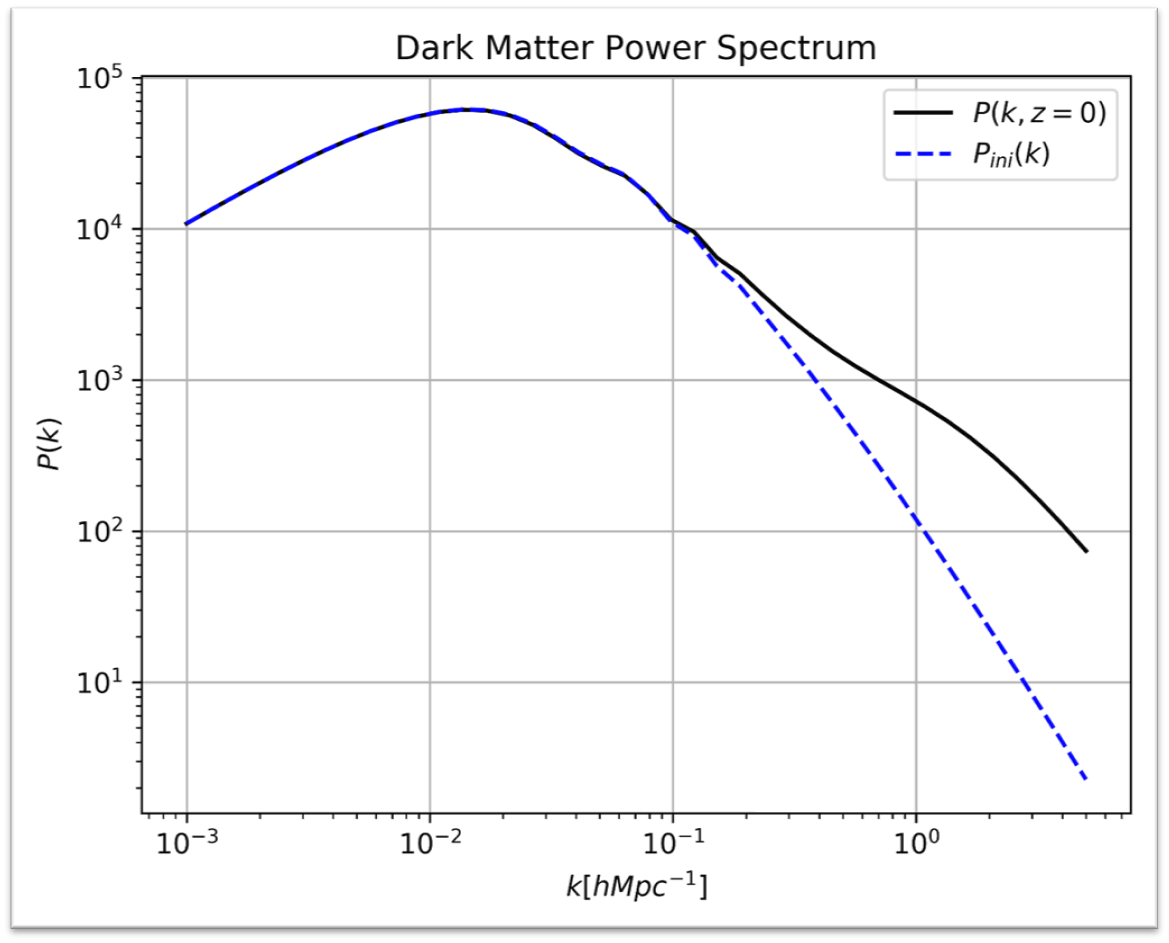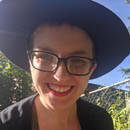The Matter Power Spectrum
Research on cosmology of the large scale structure invariably means looking at the statistical properties of galaxy positions. A key assumption in cosmology (that is validated experimentally), is that of homogeneity (no special position), and that of isotropy (no special direction). As a result, what we are interested in is the statistics of the distance between galaxies -- which is to say, "how likely is it that a galaxy is a given distance from another galaxy"?
This statistic which communicates the over-probability of a galaxy being a certain distance from another is known as the "two point correlation function". Because many measurements are nice in Fourier space, and the calculation of the two-point correlation function involves a convolution, we end up calculating the Fourier transform of the two point correlation function, known as the power spectrum.
This measurement allows us to make predictions or measurements based on the leading theories that underlie the early universe. For instance, in the figure, the peak of the matter power spectrum is predicted by the matter-radiation equality era in the leading cosmological theory, Lambda-Cold Dark Matter (LCDM). Further, from this peak we can measure the density of matter in the universe.
In my research, I am interested in improvements to theory of the matter power spectrum that are applicable to measurements, and in extracting information by looking at redshift-space distortions. I am also interested in Picard-Lefshetz integration, and its applications to the matter power spectrum. Finally, I take an interest in the statistics of angular momentum, and how that can be used as a complementary observable from our existing galaxy measurements.

